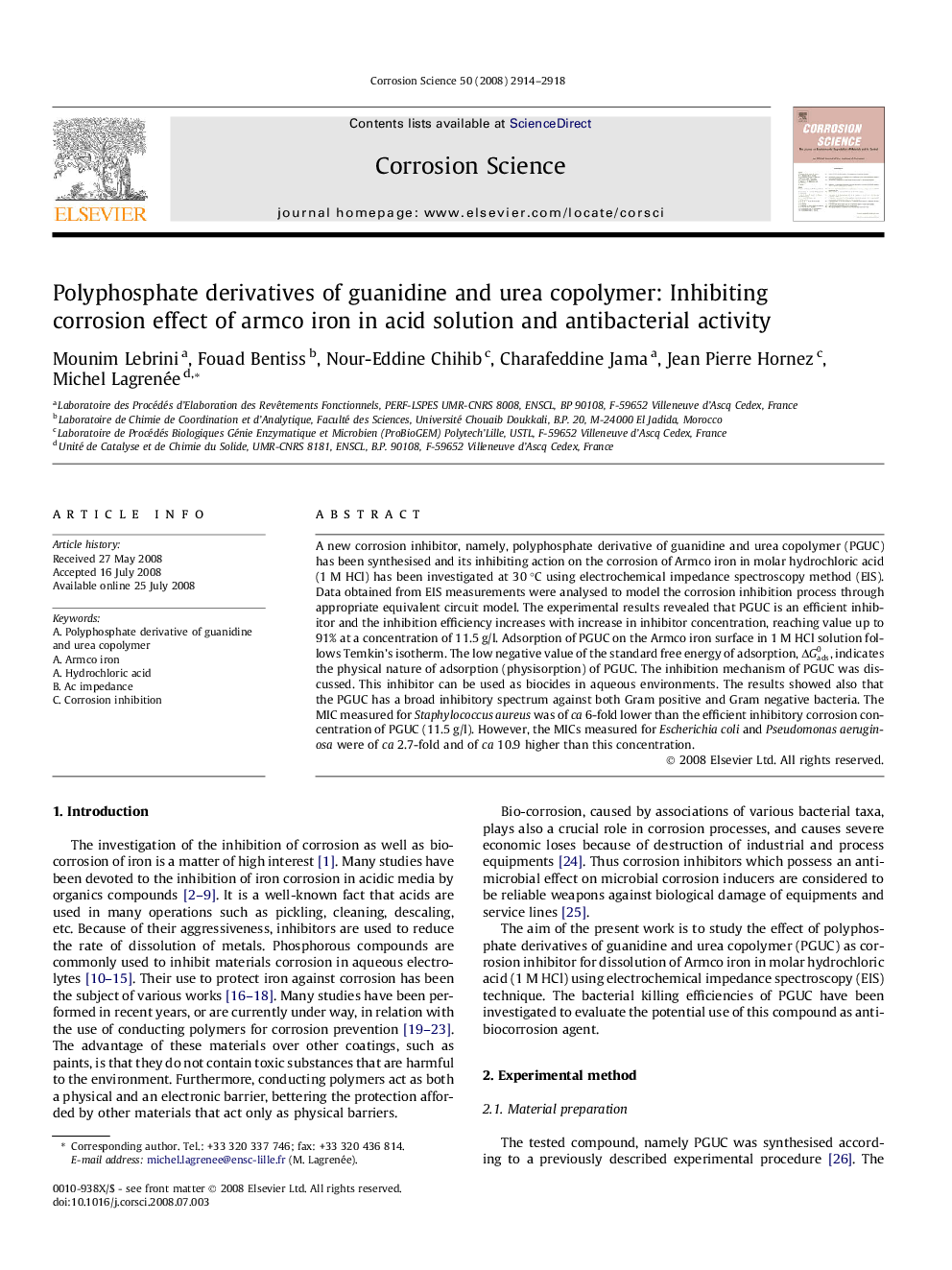| Article ID | Journal | Published Year | Pages | File Type |
|---|---|---|---|---|
| 1471488 | Corrosion Science | 2008 | 5 Pages |
A new corrosion inhibitor, namely, polyphosphate derivative of guanidine and urea copolymer (PGUC) has been synthesised and its inhibiting action on the corrosion of Armco iron in molar hydrochloric acid (1 M HCl) has been investigated at 30 °C using electrochemical impedance spectroscopy method (EIS). Data obtained from EIS measurements were analysed to model the corrosion inhibition process through appropriate equivalent circuit model. The experimental results revealed that PGUC is an efficient inhibitor and the inhibition efficiency increases with increase in inhibitor concentration, reaching value up to 91% at a concentration of 11.5 g/l. Adsorption of PGUC on the Armco iron surface in 1 M HCl solution follows Temkin’s isotherm. The low negative value of the standard free energy of adsorption, ΔGads0, indicates the physical nature of adsorption (physisorption) of PGUC. The inhibition mechanism of PGUC was discussed. This inhibitor can be used as biocides in aqueous environments. The results showed also that the PGUC has a broad inhibitory spectrum against both Gram positive and Gram negative bacteria. The MIC measured for Staphylococcus aureus was of ca 6-fold lower than the efficient inhibitory corrosion concentration of PGUC (11.5 g/l). However, the MICs measured for Escherichia coli and Pseudomonas aeruginosa were of ca 2.7-fold and of ca 10.9 higher than this concentration.
